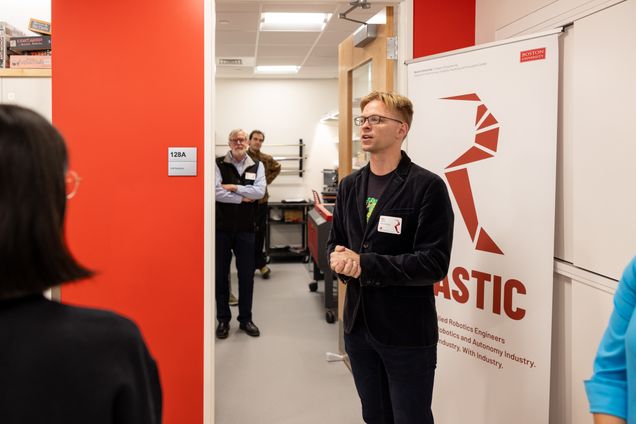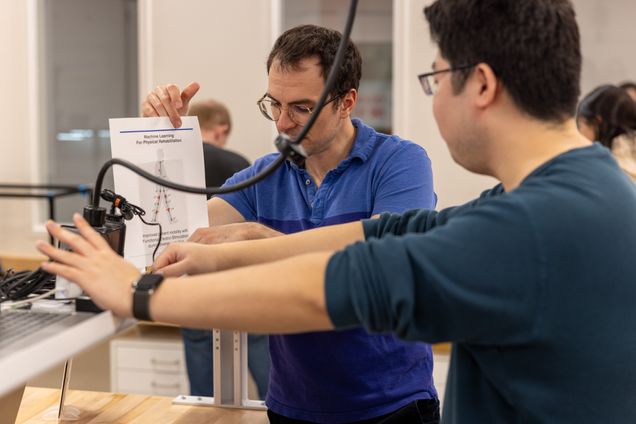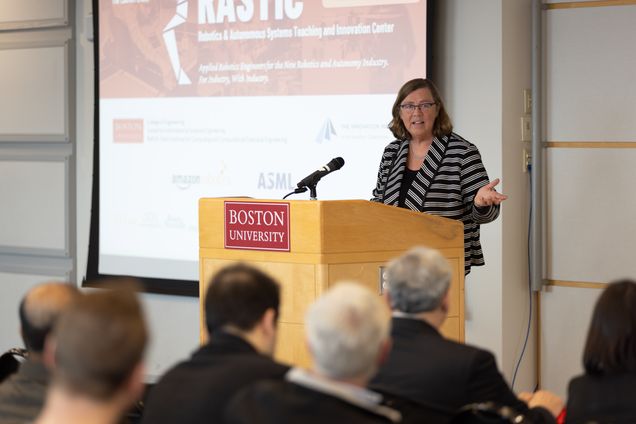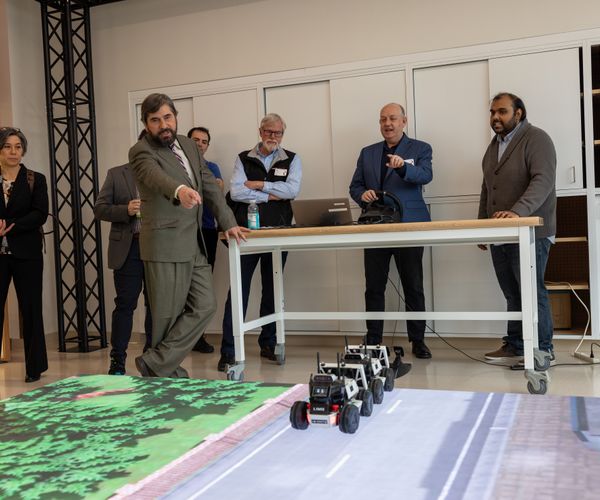Guided by the Boston University College of Engineering’s belief that “Great Minds Do Not Think Alike,” the new BU Robotics & Autonomous Systems Teaching and Innovation Center (RASTIC) was officially set in motion on March 4, 2024. RASTIC will not only allow students to expand and hone their robot skills but will serve as an innovation space and thriving community.
RASTIC was founded in 2022 with a $8.8 million capital investment from the Innovation Institute at the Massachusetts Technology Collaborative (MassTech) and Boston University. Located on Boston University’s Charles River Campus, the 2,000 square foot RASTIC facility features areas dedicated to AI and soft robotics development, device construction, an arena for robot testing, and a miniature city to advance autonomous vehicle research. The Center is a “playroom” where students can design, build, and test all kinds of robots and will serve as an intersection of industry and academia.

The inaugural event began with a facility tour, where guests from government, industry, and academia were welcomed by RASTIC Executive Director Dr. Kenneth Sebesta. Dr. Sebesta, who received his PhD from the University of Luxembourg in Controls, has experience in academia, industry, and start-ups. In an interview, Dr. Sebesta described his role at the Center as a “servant leader” who helps students avoid “side quests,” which he describes as distractions that prevent students from finishing their “primary quests” — robotics projects — on time and budget.
During the facility tour, students presented projects they have been working on, including Mitch Kain (M.S. in ME) and George Knight (M.S. in ME), the stewards of the autonomous hovercraft “Bert.” Students also presented a project called “Haptic Teleoperation with Collision Avoidance,” which helps an operator (robot) with a haptic, touch-stimulated, device avoid collisions with obstacles, including cardboard boxes and a stuffed dog.

Megha Venkatesam (M.S. in ME), invented the RASTIC logo, an “R” that is purposefully missing its leg. “Why? Because every robot is special. If it’s a drone, [the leg] becomes a propeller. The R becomes a drone R. If it’s AI, [the leg is] a waterfall of 1s and 0s,” Dr. Sebesta said.
Currently, College of Engineering students can drop in to the Center and work on their projects. Next semester, students will be doing classwork inside RASTIC, including dedicated labs for robotics classes. According to their website, RASTIC is specifically designed for masters-level robotics programs, to complement undergraduate capstone courses and research-oriented labs.
After the student demonstrations and tour concluded, there was a speaking program that featured RASTIC’s leaders. The program featured speakers in academia, including Ioannis Paschalidis, Director of the Rafik B. Hariri Institute for Computing and Computational Science & Engineering and Principal Investigator (PI) of RASTIC; Kenneth Lutchen, Boston University Provost Ad Interim; and Elise Morgan, Boston University College of Engineering Dean Ad Interim.
It also featured speakers in government and industry, including Yvonne Hao, Secretary of Economic Development for the Commonwealth of Massachusetts; Carolyn Kirk, MassTech Executive Director; Tye Brady, Amazon Robotics Chief Technologist; and Spencer Farland, ASML Senior Director of US Development & Engineering.
Together, the speakers emphasized RASTIC’s intersection between academia, industry, and government.

“We have to ensure that the doors of the RASTIC Center are open for the start-up community and for the workforce’s needs,” Kirk, MassTech Executive Director, said. “The vision that we have here is to be expansive in the opportunities that [RASTIC] creates for the many folks who are trying to make their path in a really exciting industry.”
Dr. Sebesta has large ambitions for both the future of the Center as a whole and the students involved with the Center. He hopes that RASTIC will become the “first point of contact” when someone looks up robotics at Boston University. “You should find RASTIC and then we can help you find the right people to talk to for whatever that might be,” he said.
He is confident that the Center will produce students ready to enter the workforce and begin making an impact in industry right out of college. “These students will be able to bring to bear the skills and knowledge which they’ve gained through RASTIC to instantly help the company in its challenges and then to keep being able to move the company forward.”
To read more, click here.
